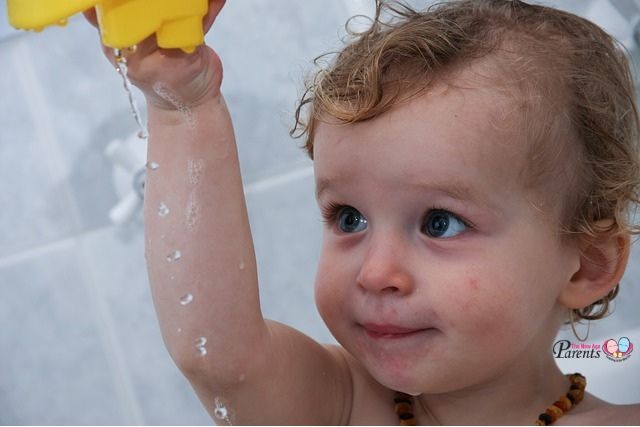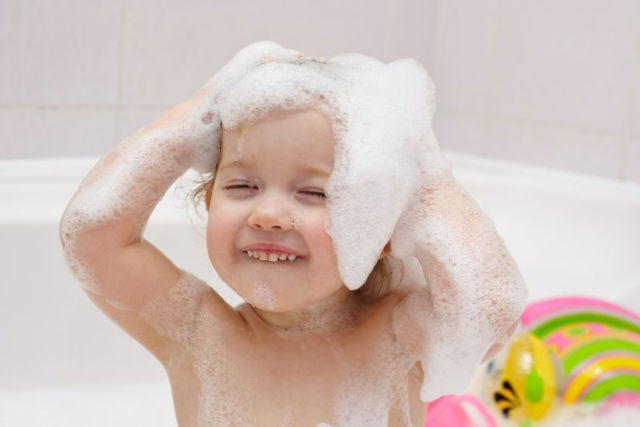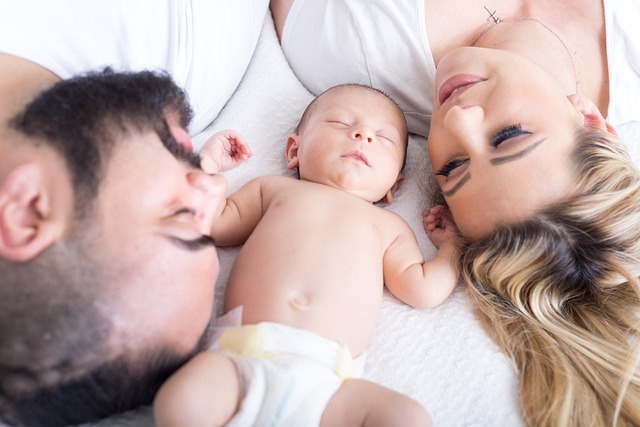Cradle Cap
Causes: Cradle cap is a dry, flaky, yellowish ‘dandruff-looking’, scaly patches over the scalp and sometimes seen over the eyebrows of a baby. It usually starts after a month old and may last for a few weeks or months. It is not itchy and does not disturb the baby. Doctors call this Infantile Seborrhoeic Dermatitis.

How to care: Applying some olive oil or baby oil onto the affected areas for about 10 to 20 minutes (depending on how thick the accumulation is) helps in softening the plaques. After which gentle shampooing and massaging the plaques will loosen it and eventually remove the plaques. It is important not to use too much force as this might leave to abrasions. The other thing to note is that the plaques may recur again but will eventually disappear.
When to seek medical attention: If the rashes appear in other places especially over the joints, a consultation with a doctor is required. This may be eczema instead.
*******************************
Vernix
Causes: All babies have this whitish, creamy, waxy material covering the baby’s skin immediately after birth. The full name is vernix caseosa. It starts to be formed when the baby is in the last trimester before the baby is born. This waxy material is thought to be protective to the baby’s skin after birth. It helps in neonatal adaption to the hostile environment. It prevents skin water loss, keeps the baby warm and even helps in protection against skin infections.
How to care: Most would allow the vernix to be removed gradually eventually with time. There is no immediate necessity to remove it unless it is very messy with bloodstains, etc. In order to remove it, you will have to apply some baby oil over the area and gently use cotton wool to clean it off.
When to seek medical attention: No real reason that one will need to seek medical attention unless there are some other rashes appearing with the vernix.
*******************************
Cord care

Condition: Yellow pus-like discharge around cord
How to care: The umbilical cord is the baby’s lifeline when he is in the womb. Once the baby is born, the cord is cut and clamped. From a translucent whitish cord, it will gradually swivel and dry, turning hard and black, finally falling off by about 2 to 3 weeks. When the cord is drying and hardening, the base will start to get loose and there might be some yellowish or bloody discharge from the base of the stump. This is normal and it is important to clean the base with alcohol swabs or boiled clean water on a ball of cotton wool.
When to seek medical attention: If the cord stump and surrounding skin turns red, swollen and even painful, there may be an infection. As there has been a connection from the blood vessels in the umbilical cord into the baby, it is very important to bring your baby to seek medical attention as any infection will enter the baby directly.
It is also important to bring your doctor to see a doctor if the umbilical cord does not fall off after 3 weeks and also if after the cord falls off, the remnant fleshy lump does not dry up completely by 3 weeks old.
*******************************
Baby rash

Causes: There is a common skin rash in many newborns that will appear soon after birth. It is called Erythema Toxicum Neonatorum or you will hear some doctors calling it ‘ET’ rashes. It appears as red patches of various shapes and sizes with tiny white or yellow heads in the centre. It is harmless and resolves within 1 to 2 weeks. The area of the rash moves from place to place until it eventually completely resolves. No one actually knows the cause of the rashes but some think it is due to the skin reacting to a new environment; from an environment where it is covered with water to one where it is dry.
How to care: There is no need to apply anything on to the skin. It is best left alone and keep the baby cool.
When to seek medical attention: If the rashes have pus-filled blisters, there might be a skin infection and medical attention is needed. The rashes do not usually affect the palms and soles of the feet. It is best to bring attention to see a doctor if you see this.
*******************************
“Pimples” or bumps on baby skin
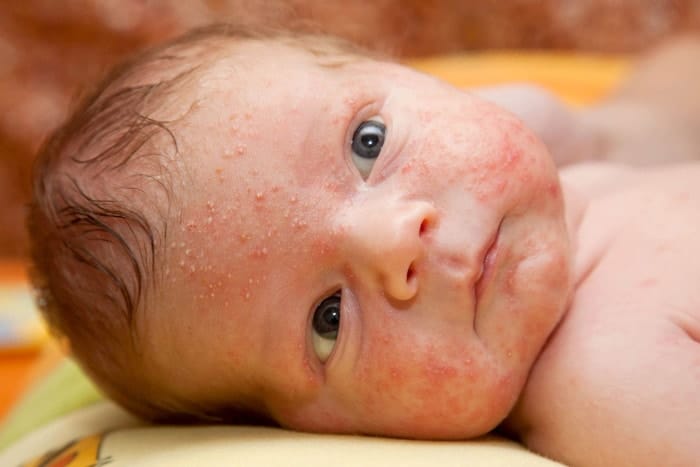
Causes: This ‘pimply’ rash usually starts on the cheeks and face of most newborns when they are about 2 to 3 weeks old. It may extend to the forehead, scalp and even around the ears. It is not itchy and does not disturb the baby. It may worsen when the baby is hot and fussy or when the skin is irritated by saliva, spit milk or even clothes rubbing over it. There is no known cause for the ‘pimples’. Some believe it is due to hormonal changes just prior to delivery. Whatever it is, it is self-limiting and it will eventually completely resolve.
How to care: Do not apply any creams or use any acne wash over the skin. Just simply wash your baby’s face with cool water will reduce the rashes. In fact, you might notice that the rashes improve when the baby is in a cool environment or after a bath and worsens when he is warm.
When to seek medical attention: If there are blisters over the rashes and you can see pus collection in the blisters, you must bring the baby to seek medical consultation.
*******************************
Jaundice (yellowness in skin and around eyes)
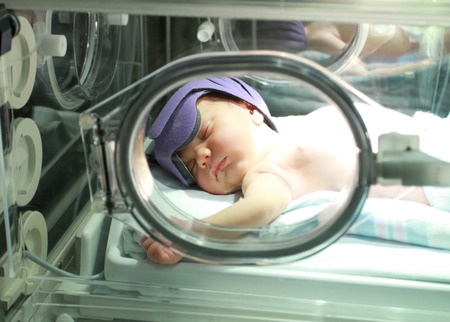
Causes: Jaundice is the yellow discolouration of the skin and eye whites. The yellow colour is due to a pigment in the blood called bilirubin. It is caused by the break down of red blood cells in the body. Jaundice in a baby usually start 48 hours after birth, stabilizes when one week old and clears by the second to third week. Most babies (70 to 80%) have some jaundice after birth.
How to care: Close monitoring of your baby is important if your baby has jaundice. If the jaundice is mild, it will stabilize and eventually completely clear. If jaundice is high, putting the baby under special photo lights will help bring down jaundice.
When to seek medical attention: If your baby appears jaundice and is not feeding well or appears very lethargic, you must bring you baby to medical attention immediately. Following up on jaundice in the first week to 2 weeks of life is the most important part of looking after your baby.
*******************************
Eczema (skin allergies)

Causes: Eczema is a fairly common skin condition that affect babies from as young as one month old. It is inherited from parents who may other forms of allergies like sensitive nose, lungs or skin.
How to care: As these children have a “bad skin barrier” it is important to moisturizer the baby again and again. Keep the baby skin from drying and any form of irritation will help. Sometimes there will be a need to apply a mild form of steroid cream to rescue the skin from getting worse for a short period.
➡️ Related Read: Choosing Newborn Baby Skin Care Products
When to seek medical attention: For eczema, all children should be followed up and treatment tailored to the degree of the skin affected.
⇒ Related Read: All You Need to Know About Eczema
By Dr Ong Eng Keow, Paediatrician & Neonatogist, International and Child Adolescent Clinic.
This was first published in our Parenting with Love Seminar 2016 Booklet.
* * * * *
Like what you see here? Get parenting tips and stories straight to your inbox! Join our mailing list here.
Want to be heard 👂 and seen 👀 by over 100,000 parents in Singapore? We can help! Leave your contact here and we’ll be in touch.




































